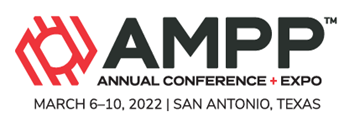Search
AMPP Conference Papers
View as
Sort by
Display
per page
Understanding The Effects of Test Solution Chemistry on Sour Service Testing at a pH Range Relevant to Flexible Pipe in Oil and Gas Applications
Product Number:
51323-19055-SG
Publication Date:
2023
$20.00
Understanding The Effects Of Zn Injection And OLNC-Treatment On 316 Stainless Steel Oxide Under Simulated BWR Conditions
Product Number:
ED22-17227-SG
Publication Date:
2022
$20.00
Understanding the False Positive of Modified Martensitic Steels in Sweet & Sour Service Conditions using a Point Defect Model Perspective
Product Number:
51323-18901-SG
Publication Date:
2023
$20.00
Understanding the Influence of Surface Condition on the Fatigue and Corrosion Fatigue Behavior of SLM718
Product Number:
51324-21234-SG
Publication Date:
2024
$40.00
Understanding The Usefulness of German Test Method TL 8135-002 For Various Steel Alloys
Product Number:
51323-19169-SG
Publication Date:
2023
$20.00
Unexpected Consequence of Biocide Addition on Corrosion
Product Number:
51323-19326-SG
Publication Date:
2023
$20.00
Uniform Corrosion Characterization of UNS N08935
Product Number:
51323-19294-SG
Publication Date:
2023
$20.00
Unravelling Surfactant Partitioning: Part 1 - Fundamental Theory and Modelling of Single and Multi-component Surfactant Distribution Responses
Product Number:
51324-20882-SG
Publication Date:
2024
$40.00
Unravelling Surfactant Partitioning: Part 2 - Experimental Study of Multi-Component Surfactant Partitioning Responses and Their Influence on Inhibition Performance
Product Number:
51324-20883-SG
Publication Date:
2024
$40.00
Unsaturated Polyester Coatings Curing Kinetics. How to Ensure High Production Efficiency for Offshore Wind Foundation
Product Number:
51324-20934-SG
Publication Date:
2024
$40.00
Unveiling the Mechanical Feasibility of Glass Reinforced Plastic for Post Combustion CO2 Capture Amine Service: A Thorough Examination
Product Number:
51324-20710-SG
Publication Date:
2024
$40.00
Upcoming Changes To NSF Drinking Water System Components Program (NSF 600) - No Need To Be Afraid
Product Number:
51322-18136-SG
Publication Date:
2022
$20.00












